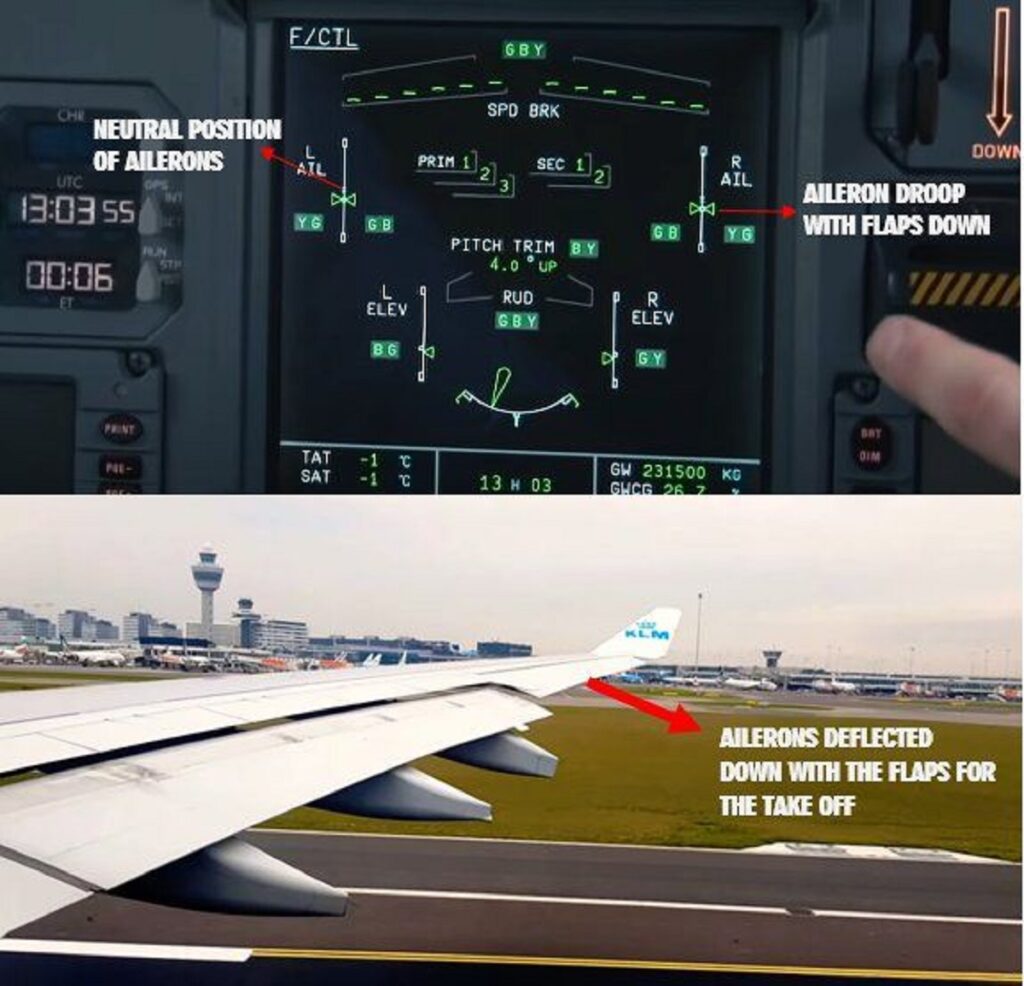Is it possible to utilize ailerons for flap-like functions?

Aileron droop is a noteworthy feature seen in many modern airplanes, including models like the Boeing 777 and 787, as well as Airbus A320, A330, A340, A350, and A380. This aileron droop, also known as “aileron deflection,” is usually managed through the flap lever, and it plays a vital role in enhancing the aircraft’s performance during takeoff and landing.

For instance, in the Airbus A320, when the pilot selects the first notch of flaps, the ailerons undergo a significant change in their neutral position, angling downward by approximately 5 degrees. This unique configuration serves a dual purpose. When the ailerons are down, they effectively function as flaps, increasing the lift over the wings, which in turn reduces the required takeoff distance. During landing, the ailerons are deployed in the same manner, aiding in lowering the approach speed and consequently reducing the landing distance.
The presence of aileron droop is typically indicated on the flight control display in Airbus aircraft, such as the A320, A330, and A340, and it can also be observed externally. In some aircraft, like the DHC-6 Twin Otter, this feature is taken to a new level. The Twin Otter boasts inboard flaps and notably extended ailerons. These ailerons can droop to nearly the same angle as the inboard flaps when the pilot extends the flaps for takeoff and landing. This unique design effectively provides the aircraft with full-span flaps, contributing to exceptional Short Takeoff and Landing (STOL) capabilities. The Twin Otter is renowned for its outstanding performance in short-field operations and is a testament to Canadian engineering excellence.
Author – Nischal Paudel
Pilot






